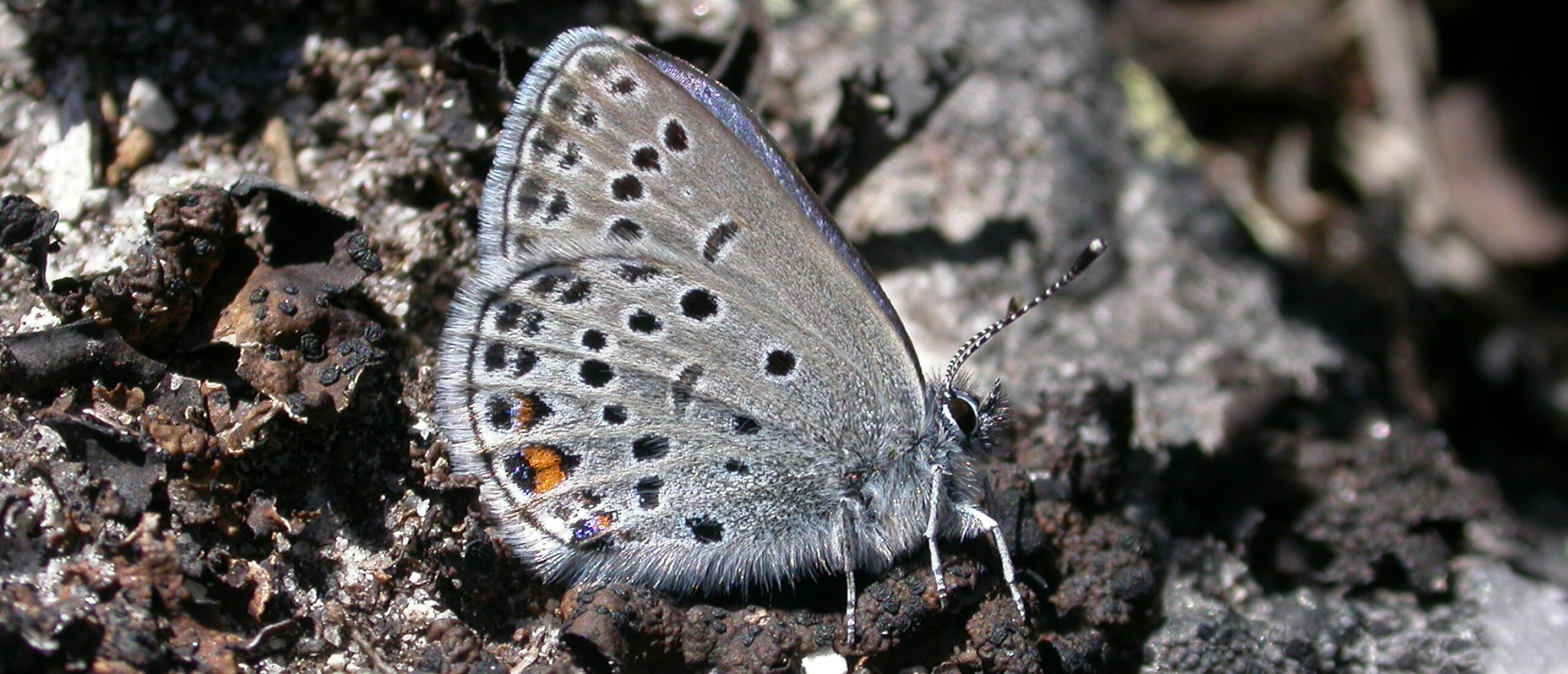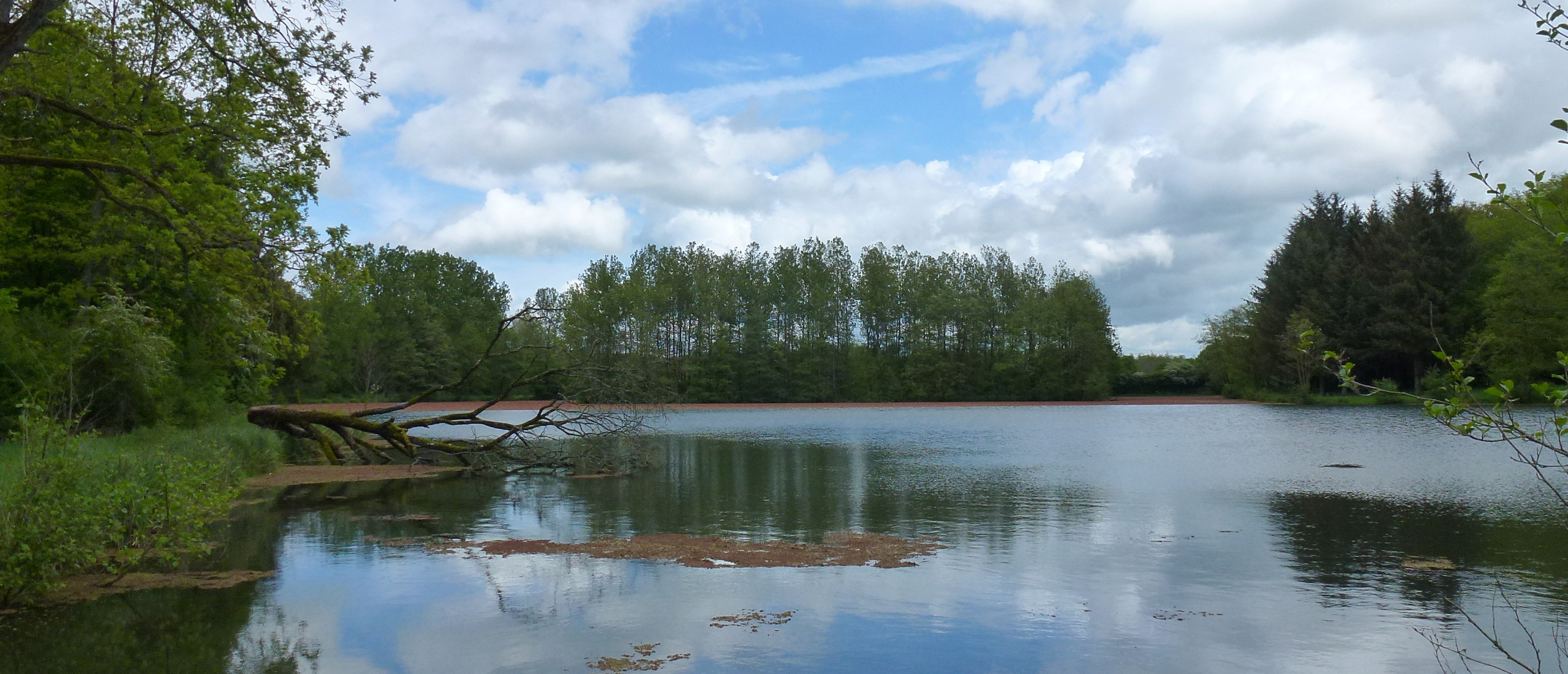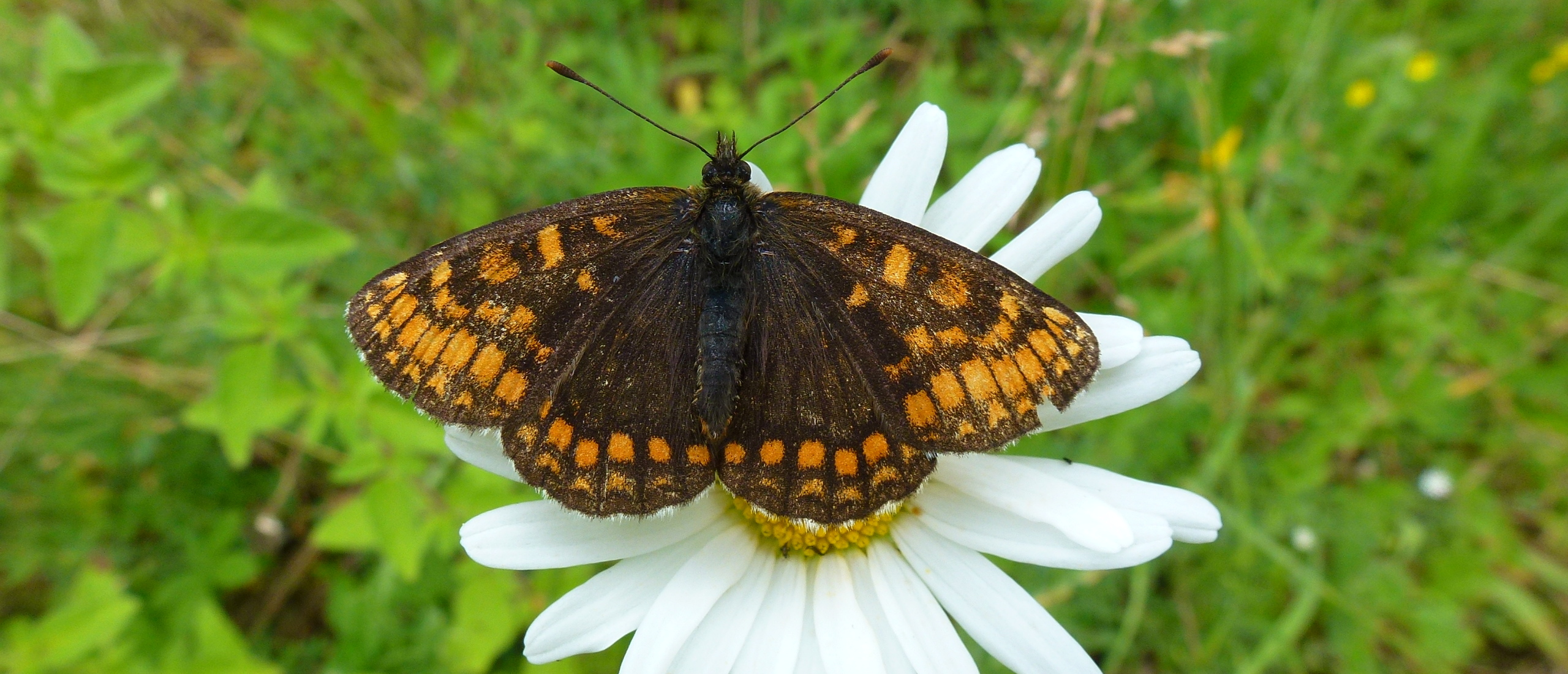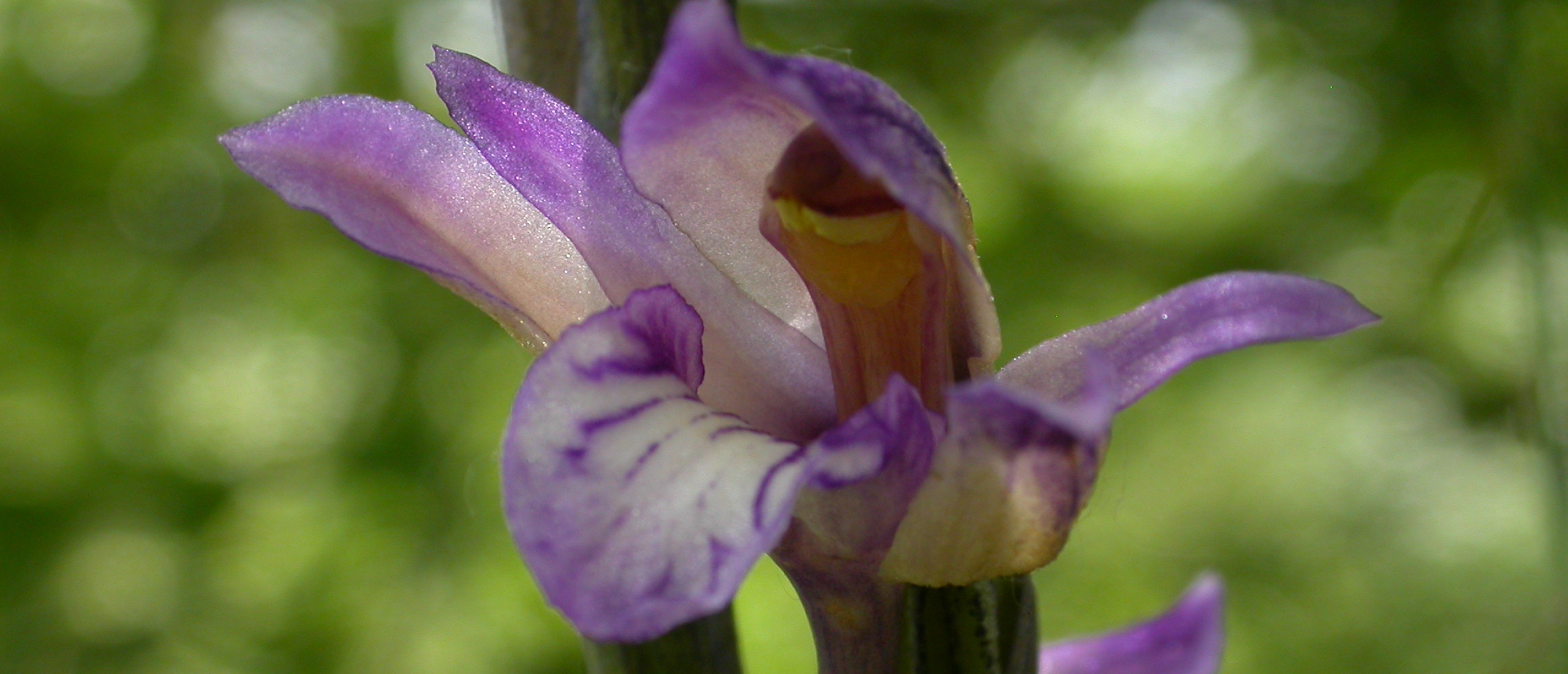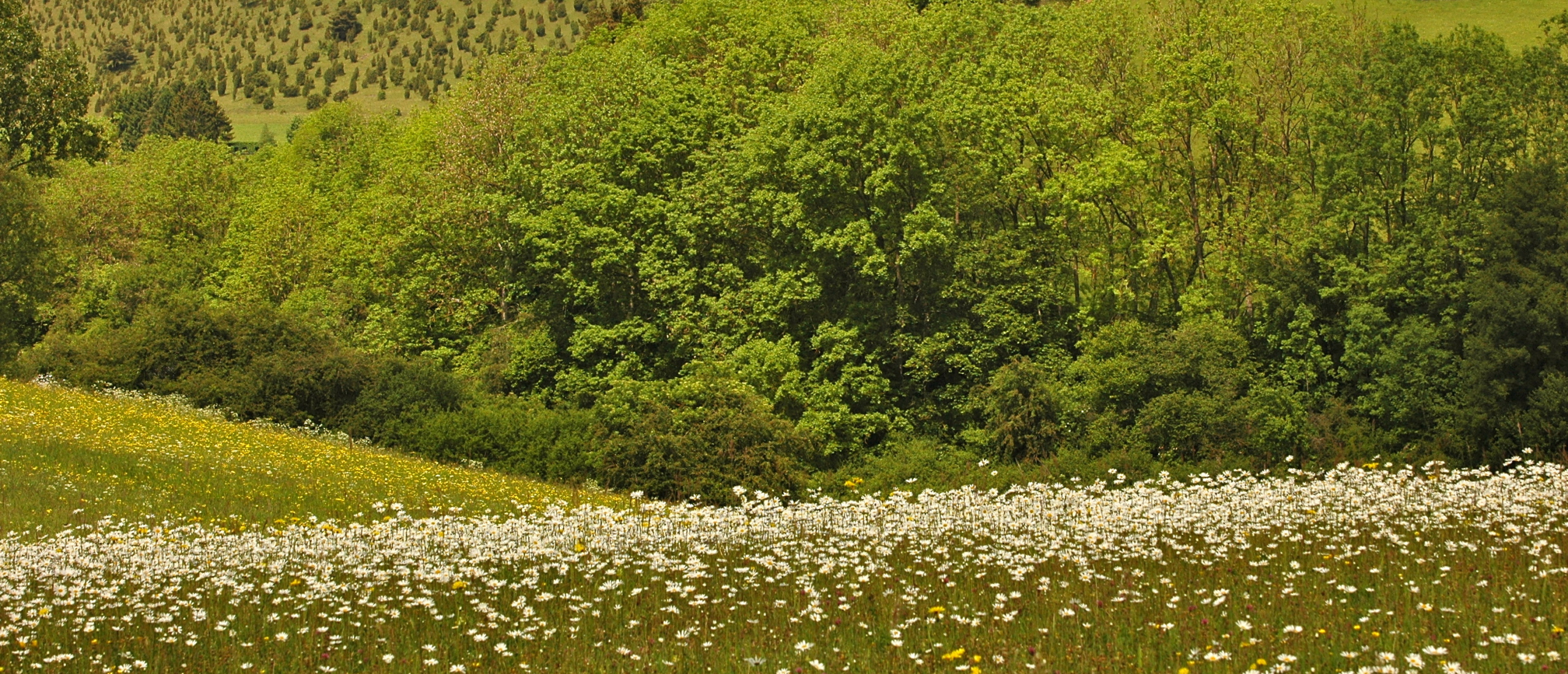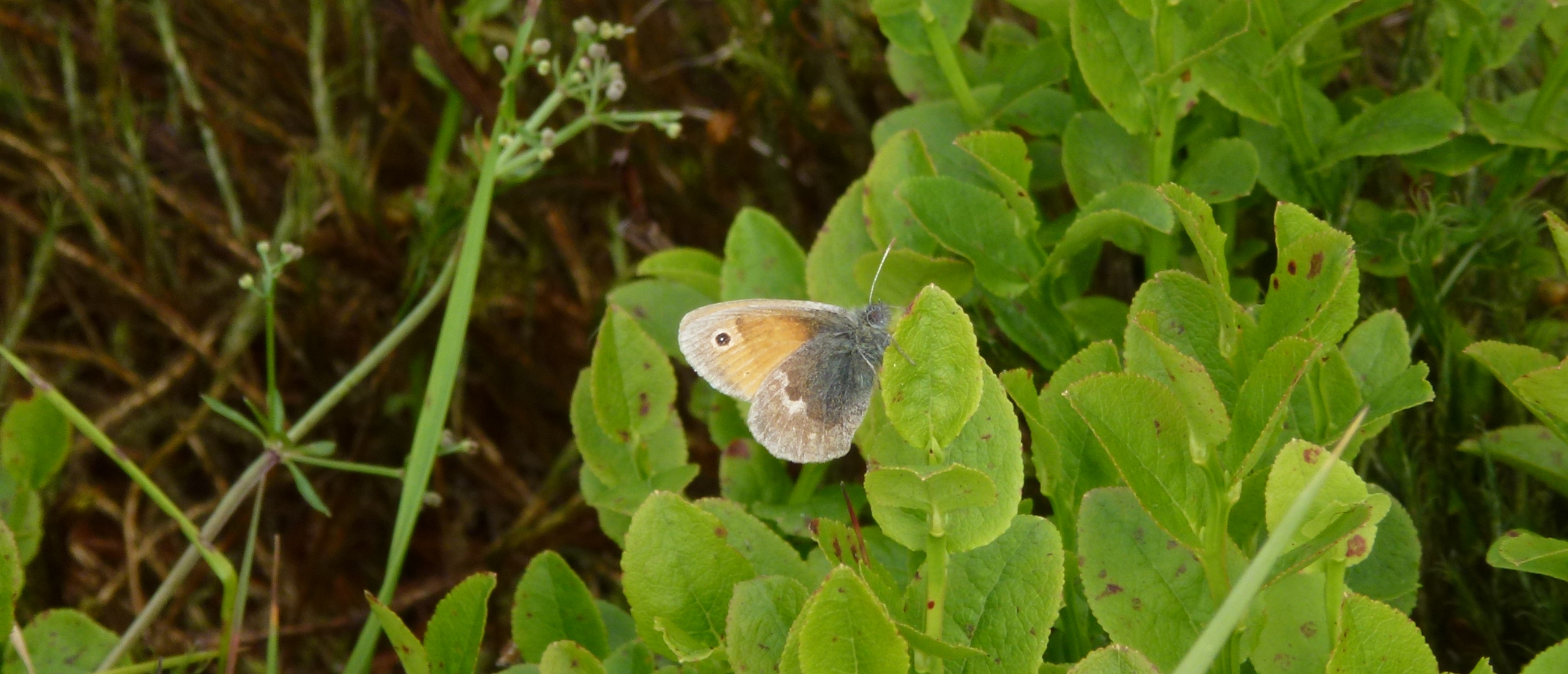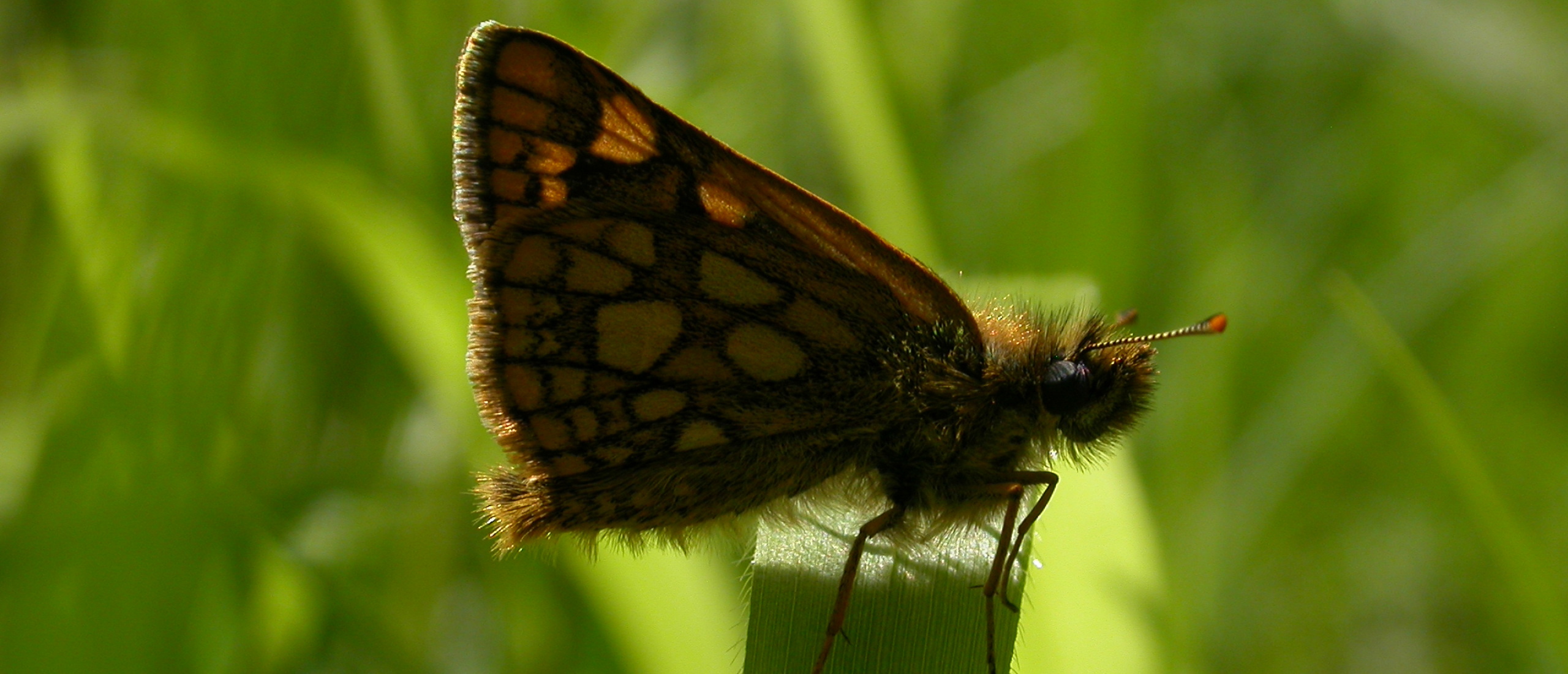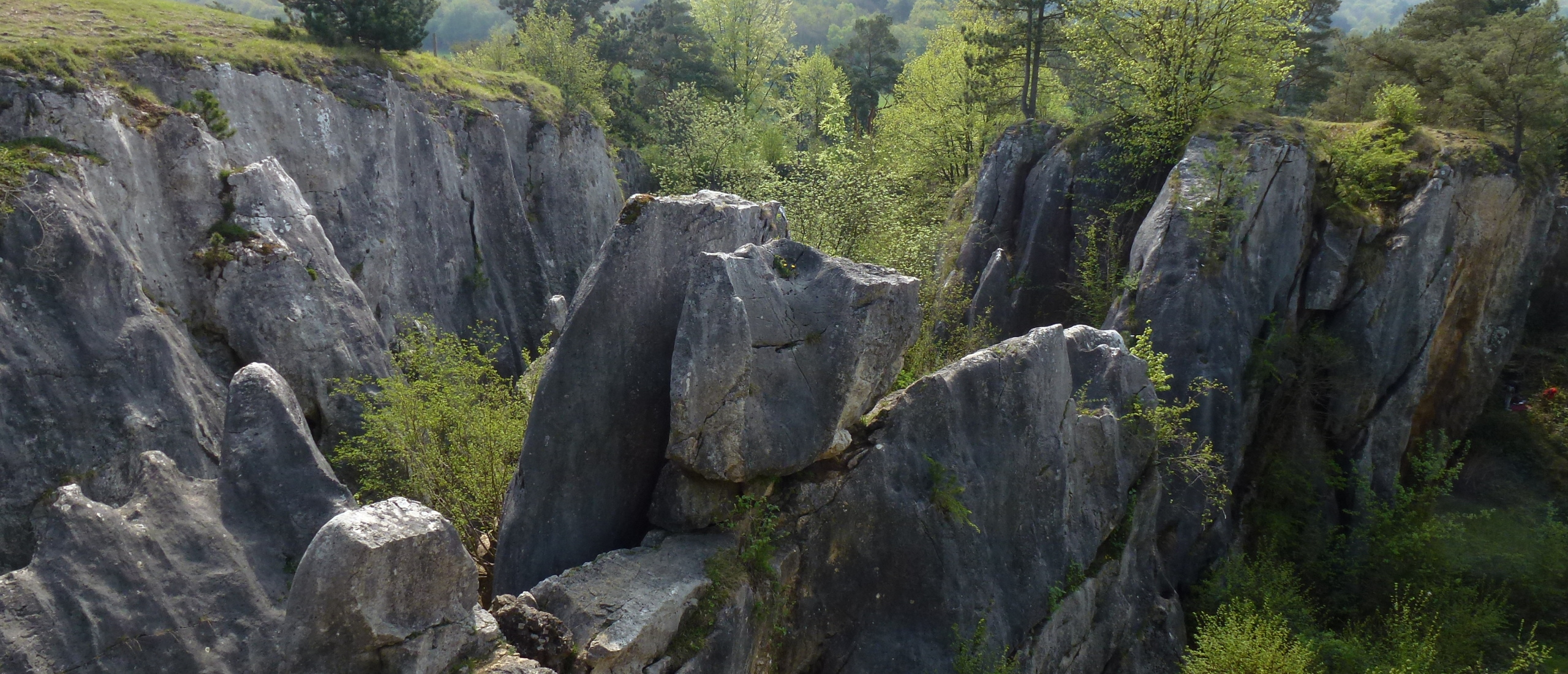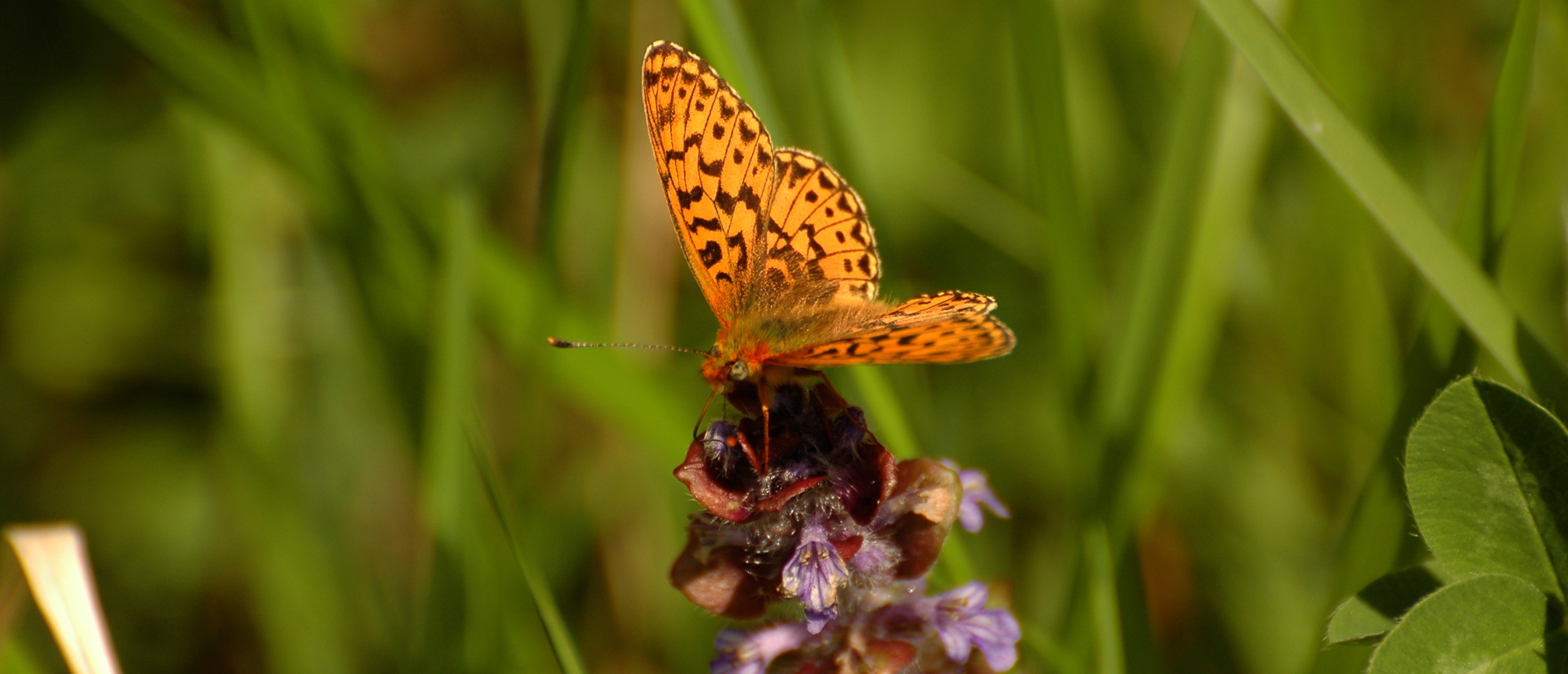
Spring butterfly catch-up This weekend has provided a most welcome opportunity for me to clinch some key spring butterfly species, which would almost certainly have eluded me in 2014 had the weather not been as wonderful as it has been, and had I not had the chance to visit my favourite locations in southern Belgium and northern France. I started off from home in the Netherlands on Friday morning, and by mid-afternoon I was on station in one of my regular forest haunts in the Viroinval region of southern Belgium. Before I had even opened the car door, I noticed several Chequered Skippers, Carterocephalus palaemon, settling close by on the ground. When I did open the door, I was immediately hit by an unpleasant smell - there was a broken, rotting bird's egg, which appeared to be attracting them, although I did not observe any butterflies actually feeding from it. The Chequered Skippers were so insistent that I had to shoo one out of the car boot!
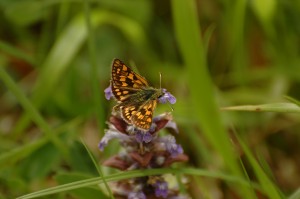 The Chequered Skipper is one of the most attractive spring butterflies
The Chequered Skipper is one of the most attractive spring butterflies
Setting off along a long, straight section of track, it was not long before I spotted my other target species here, the Pearl-bordered Fritillary, Clossiana euphrosyne. I had written in last weekend's post that I was slightly concerned that I would miss this species this year altogether as I had already seen the Small Pearl-bordered Fritillary, Clossiana selene, which normally appears just as the Pearl-bordereds are going over. However, they were still out in good numbers here, and I was pleased to add them to my list.
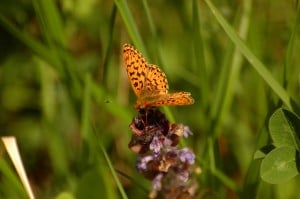 A Pearl-bordered Fritillary nectaring on Bugle
A Pearl-bordered Fritillary nectaring on Bugle
An extraordinary amount of work has been done in recent years for butterflies in the Wallonie region of Belgium, with forest rides being broadened to allow the sun to penetrate the otherwise dark woods and wildflowers to flourish, and some areas of woodland being cleared altogether to open up extra areas of limestone grassland, which has had the added benefit of revealing some extraordinary rock formations that had long been overgrown and invisible. Having had my fill of these woodland butterflies, I drove the short distance to a contrasting area of open grassland, where my first addition was the Small Blue, Cupido minimus, one of Europe's tiniest butterflies. Restricted to areas where its larval foodplant, Kidney Vetch, grows, this discreet butterfly is always hard to follow with the eye as it skitters along through the long grass.
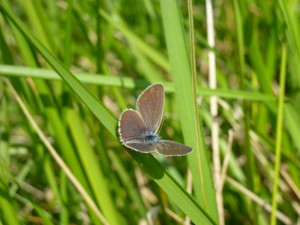 The Small Blue is a discreet little butterfly
The Small Blue is a discreet little butterfly
On the stony, south-facing slopes lower down, I was pleased to find another species I could easily have missed for the year, the Red-underwing Skipper, Spialia sertorius. Superficially similar to the commoner Grizzled Skipper, Pyrgus malvae, this butterfly reaches the northernmost limit of its range here, and is restricted to only the warmest parts of the reserve.
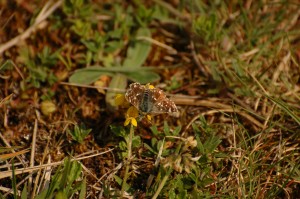 The Red-underwing Skipper is superficially similar to the commoner Grizzled Skipper
The Red-underwing Skipper is superficially similar to the commoner Grizzled Skipper
Back on the flatter area at the top, my eyes were drawn to a fluttering form paying considerable attention to the flowerheads of Cowslip....a female Duke of Burgundy, Hamearis lucina, yet another potential absentee from my 2014 list.
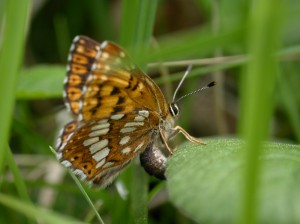 The female Duke of Burgundy laying her egg under a Cowslip leaf
The female Duke of Burgundy laying her egg under a Cowslip leaf
This is the sole European representative of the Metalmarks, a largely South American family. These are recognised by the fact that the male walks on four legs, while the female uses six. I had ample opportunity to see that this was clearly a female, as she was so busy searching for suitable Cowslip leaves on which to lay her eggs that she allowed for a long observation at point blank range. I was surprised by how long she apparently needed to rest after laying each egg.
Elated with this success, I moved across the valley to one of the newly opened areas, and it was not long before I was admiring a magnificent female Scarce Swallowtail, Iphiclides podalirius, also egg-laying. This splendid butterfly, perhaps one the most spectacular species in Europe, also reaches its northern limit here, and has also benefitted greatly from the clearance of woodland. It requires the presence of its larval foodplant, Sloe, but the traditional hedges or rows of sloe do not appear to be to its liking; it seeks out low, isolated bushes, in this case growing in a deep fissure in the rocky ground, which probably provide a warmer micro-climate for the caterpillars.
 The Scarce Swallowtail is one of Europe's more spectacular butterflies
The Scarce Swallowtail is one of Europe's more spectacular butterflies
On Saturday, I made a pilgrimage to the military camps of the northern Champagne region of France, islands of biodiversity in a sea of intensive agriculture. Anyone who naively believes that the military holding on to large swathes of land is wrong should visit this place; the very presence of the army has prevented these marvellous areas from being ploughed up and converted into the vast, rolling fields that otherwise entirely dominate this area, leaving no space whatever for wildflowers and butterflies. Entirely closed to the public except where a public road traverses the military training ground, my strategy is to stop and search along the wide road verges, without penetrating into the camp proper. Even here I am always nervous, and I have been questioned on several occasions. My cameras could easily be confiscated, and my lame-sounding explanation "Je cherche des papillons" may not always be so readily accepted. First impressions indicated that there were no butterflies flying at all, but gradually they began to appear, led by the small fritillaries, of which I was to see three species: the Marsh Fritillary, Euphydryas aurinia, the Glanville Fritillary, Melitaea cinxia, and the Knapweed Fritillary, Melitaea phoebe. The latter two of these particularly favour the areas of grassland that have been churned up by the snouts of wild boar; the ditches the animals create dry out, and provide deep shelters in which the butterflies can bask out of the wind.
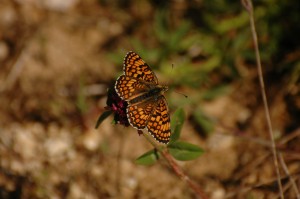 The Knapweed Fritillary lack the black-centred orange patches
The Knapweed Fritillary lack the black-centred orange patches
A few Berger's Clouded Yellows, Colias alfacariensis, were flying rapidly between patches of their foodplant, Horseshoe Vetch, and numerous Dingy Skippers, Erynnis tages, were also present. Blues were surprisingly few and far between, although I did find three Reverdin's Blues, Plebejus argyrognomon, another species that it on the edge of its range here.
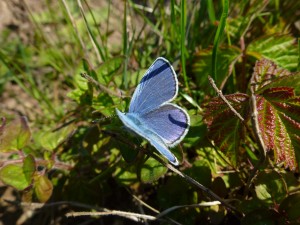 Reverdin's Blue has a restricted range in northern Europe
Reverdin's Blue has a restricted range in northern Europe
It was not long before I spotted a smaller, brownish butterfly, which turned out to be a female Silver-studded Blue, Plebejus argus. It is a strange thing, but I only seem to see females of this species here; perhaps the males here have a female-like appearance.
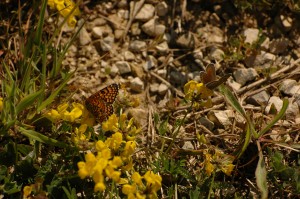 A Glanville Fritillary on the left and a female Silver-studded Blue on the right
A Glanville Fritillary on the left and a female Silver-studded Blue on the right
Having avoided being questioned by the French military on this occasion, I drove to a delightful area of low hills nearby, and although the butterflies were disappointing, I managed to see no less than eight species of orchid: Military, Fragrant, Lady, Greater Butterfly, Violet Bird's Nest, Early Spider, Common Twayblade, and Lizard Orchids.
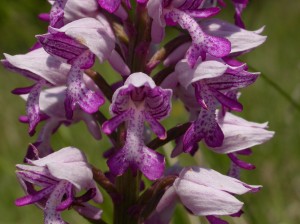 The Military Orchid is so-named for the upright-looking figures that its blooms resemble
The Military Orchid is so-named for the upright-looking figures that its blooms resemble
 The Lady Orchid is a spectacular species
The Lady Orchid is a spectacular species
My final interesting butterfly observation of the day concerned an attempted gang rape of an unwilling female Brimstone, Gonepteryx rhamni, by at one point five desperate males. The female raising her abdomen up behind her is apparently a sign of unwillingness to mate (although it might appear the opposite), and this she was clearly doing. Nonetheless, the crazed males were not easily deterred, and they jostled for position with one another in a frenzy of desire; finally, though, they had to give up and left the female to recover from all this unwanted attention.
Sunday was spent in the large area of forest that I visit most frequently in northern France, and I was pleased to find several Pearl-bordered Fritillaries here too, as I had failed to see them last weekend. One Small Pearl-bordered and several Marsh Fritillaries were also present, as were two Map butterflies, Araschnia levana. I then drove a short distance to a bushy area of calcareous grassland, where as well as adding Early Purple and Green-winged Orchids to yesterday's haul, I was delighted to find at least another five Duke of Burgundies (Dukes of Burgundy?), Hamearis lucina. I had slightly feared that they were no longer here, but this was a good number.
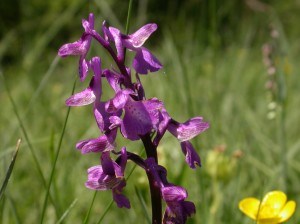 The Green-winged Orchid does indeed have slightly greenish "wings"
The Green-winged Orchid does indeed have slightly greenish "wings"
 A Duke of Burgundy ready to defend its territory
A Duke of Burgundy ready to defend its territory
One Wall, Lasiommata megera, skittered by with its characteristic flight, but the highlight was the discovery of two Sooty Coppers, Lycaena tityrus, including a female that was clearly searching for egg-laying sites. As I had never observed this species here previously, this a good, positive note on which to end this excellent weekend's butterfly watching.
 A female Sooty Copper searches for its food-plant
A female Sooty Copper searches for its food-plant
By the end of the weekend, my 2014 butterfly list for my usual area had reached: 41 species.



